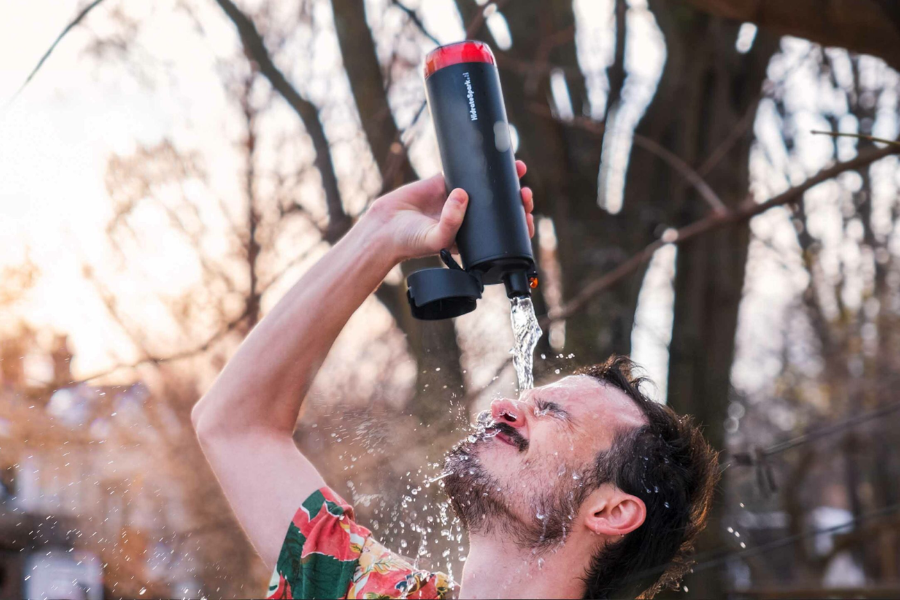Let’s be honest. For something that makes up about 60% of our bodies, we give water a shocking amount of grief. We turn on the tap with a naive trust, only to be greeted by a liquid that smells like it just escaped from a public pool and tastes faintly of pennies and regret. The journey from treatment plant to your tumbler is a wild one, and it’s a journey fraught with invisible villains and unsung heroes. Welcome to the wonderfully complex, occasionally bizarre, and utterly essential world of water filtration. Consider this your backstage pass to the hydraulic circus happening right in your pipes.
Act I: The Rogues’ Gallery – A Who’s Who of Waterborne Wretchedness
We have to know the villains before we encounter the heroes. Your glass of water is not only H2O; it is a big city centre of characters that you did not ask to come to your place.
- The Sediment Siblings: Silt & Rust:These are the clumsy, oafish brutes of the contamination world. They don’t mean any real biochemical harm, but they have the subtlety of a bull in a china shop. You’ll see them floating in your glass, giving your water the aesthetic appeal of a pond after a mudslide. They’re the reason your ice cubes sometimes look like tiny, frozen modern art sculptures, clouded with gritty, particulate confetti.
- Chlorine, the Overzealous Bouncer:Municipal water treatment plants mean well. They hire Chlorine as the bouncer to evict harmful bacteria party crashers. The problem is, Chlorine never knows when to quit. It hangs around long after its job is done, leaving your water with that pungent, eye-watering aroma of a freshly “shocked” swimming pool. Your morning glass of water shouldn’t trigger a sense-memory of doing cannonballs in your childhood swim trunks.
- The Heavy Hitters: Lead & PFAS “Forever Chemicals”:These are the ninja turtles that creep. You cannot see, smell or taste them. One of the unwanted guests is Lead, a byproduct of outdated infrastructure, which slips into the house along the old pipes, and another is an unwanted guest PFAS chemical, which are too stubborn to go home. They are the art of psychological thriller of the water world as they evoke a low-grade of unease which makes you side-eye your own kitchen tap.
- The Microbial Miscreants: Bacteria & Cysts:Think of these as the microscopic gremlins. Nasty little fellows like Cryptosporidium can turn a refreshing hydrating experience into a… well; let’s just call it a rapid-weight-loss program you never signed up for. They are the reason you sometimes eye a glass of water from an unfamiliar source with the same suspicion you’d reserve for a sketchy street vendor’s sushi.
Act II: The League of Extraordinary Filtration – Meet the Hardware
This heterogeneous group of contaminants requires an equally heterogeneous group of filtration superheroes. They all have their specialty, their personality and a particular villain that they adore killing.
- The Activated Carbon Filter: The Flavor Savant.
This is the maestro of taste, the virtuoso of vapor. Found in everything from the humble pitcher in your fridge to sophisticated under-sink systems, activated carbon is a block of material riddled with nooks and crannies, like a microscopic sponge with an absurdly high surface area. As water trickles through, the carbon performs a sort of molecular jujitsu, using a process called adsorption (with a’d’) to trap chlorine molecules, volatile organic compounds, and other taste-and-odor offenders. The result? Water that tastes like… nothing. A clean, crisp It’s the difference between licking a lamppost and sipping on a melted glacier (in a good way). When its pores are finally full, you’ll know—the water will start to taste like a ghost of swimming pools past, a sad, mustyecho of its former glory. - The Reverse Osmosis System: The Tyrannical Overlord.
If Activated Carbon is a savvy negotiator, the Reverse Osmosis (R.O.) system is a despotic monarch that tolerates no dissent. It’s a multi-stage regime that puts water through the wringer. First, a sediment filter acts as the royal guard, removing the coarse sediment siblings. Then, one or two carbon filters capture chlorine (which can damage the crown jewel). Finally, water is forced, under pressure, through a semi-permeable membrane so tight that it rejects up to 99% of dissolved solids. We’re talking lead, fluoride, arsenic, PFAS—it’s a brutal, hydraulic dictatorship of purity. The water that emerges is so pristine it can taste almost flator “empty,” having been stripped of even the benign minerals that give water its character. (A subsequent “remineralization” stage often adds a few back in for a more pleasing finish). The R.O. is a bit high-maintenance, producing wastewater as a byproduct, but for sheer, unadulterated purification, it’s the undisputed champion. - The Ion Exchange Filter: The Smooth-Talking Negotiator.
This expert is not interested in pathogens or lead; all it wants to do is to address hard water. It’s all about the swap meet. Millions of resin beads which are charged with sodium or potassium ion wait within its tank. The hardness ions (calcium and magnesium) are able to flow through, and the resin beads are able to bargain, effectively saying to one another: You may have our nasty scale-forming ions, and we may have your nice soft sodium ions instead. The change is visible. You feel it in the soft thick lather of your shampoo, in the fact that you no longer have that chalky, white scale on your showerhead; your skin does not squeak and tighten after a shower. The diplomat turns your daily ablutions to a spa day. - The Ultraviolet (UV) Purifier: The Silent Assassin.
And in need of a little science fiction, the UV cleaner will work and it does not take away a single material particle. It instead immerses the water in a deadly (to microbes) ultraviolet light. This electrical power disarranges the DNA of bacteria, viruses and cysts, making them sterile and incapable of causing harm. It is a no noise, no-see zap-fest of germicidal light showmanship taking place within a quartz sleeve. It is the silent spouse, the watchful protector of your gastrointestinal tract.
Act III: The Grand Strategy – Choosing Your Hydration Homeland Security
Selecting a water filtration system is less about buying a product and more about drafting a constitution for your home’s water supply. Here’s how to become a founding father of fresh filtered water.
- Know Thy Enemy: The Great Water Audit.
You wouldn’t deploy an army without intelligence, so don’t buy water filtration without data. For city water, your annual Consumer Confidence Report is a great start. For a more intimate portrait, a dedicated water test kit is your best friend. It will tell you exactly what you’re facing—is it a chlorine problem? A lead leach? Hard water hegemony? This knowledge is power, and it prevents you from buying a UV filter to solve a lead problem, which is like using a flyswatter to stop a tank. - Read the Fine Print: The NSF/ANSI Certification Cipher.
Ignore the marketing fluff. Independent certification is the only thing that counts. Find certifications of such organizations as NSF International or Water Quality Association. You use certain standards such as NSF 42 (aesthetic effects, chlorine, taste), and NSF 53 (health contaminants, lead, cysts, VOCs) as your references. It is a non-negotiable user agreement to your satisfaction. - The Theater of War: Point-of-Use vs. Point-of-Entry.
This is your tactical decision. Do you want to secure the capital building, or the entire nation?- Point-of-Use (POU):This is your targeted strike. Pitchers, faucet-mounted filters, under-sink systems—they protect the water at one specific tap. Perfect for drinking and cooking water. It’s efficient and cost-effective.
- Point-of-Entry (POE):This is your total domination strategy. Whole house water filtration system- a water softener is usually installed in the main water line and will filter every drop of water that goes into your house. It coats your drinking water, your shower, your laundry, your dishwasher and your dear water heater with scale. It is the final word of hydrological independence.
Ultimately the water filtration world is a great big, fancy, ballet of chemistry and physics, all done in the name of an ideal glass of water. It is the process of turning the suspect to the spectacular, the smelly to the clean and the dirty to the clean. And when you next drink a long, good gulp of really pure filtered water, remember just a little bit about the unspoken, complex fight that was fought in its honor. It is a tale of bad men and good men, all in the crystal clear realms of your poor glass.


